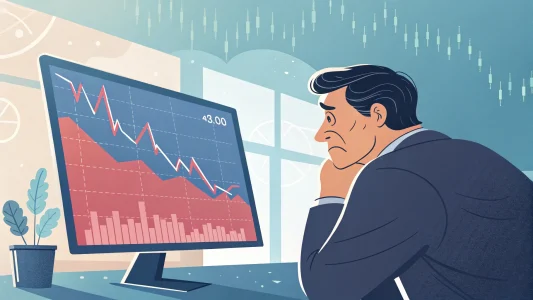It’s no secret that retirement can be expensive. It’s why we spend (or should spend) most of our productive life planning and preparing for it so it doesn’t become a financial nightmare. But even with the best-laid plans, some unexpected expenses can pop up and throw a wrench in your budget. That’s when we think, “If only I had known this could happen, I would have saved more to have enough for my dream trip to Italy.”
While unforeseen expenses are only unexpected until you know they can show up, we frequently forget about some of them and neglect to factor them into our plans and our budget. For example, most credit cards will charge a fee once a year, so it’s easy to forget about them until they show up on your statement. Other credit cards spread the annual fee in monthly installments, making these expenses far easier to manage. However, the same cannot be said about most unforseen retirement expenses. These usually end up as a part of our emergency fund in case of a rainy day. That’s why having a list of commonly forgotten expenses you should look out for is vital for retirement planning.
By the time you finish this post, you’ll be better prepared to tackle more than just a rainy day, and you’ll know if your emergency fund is enough to get you through retirement stress and worry-free.
Table of Contents
Toggle1. Unexpected home repairs and maintenance.
No matter how well-maintained your home is, something will always need to be fixed or replaced as you (and your home) age. From a new roof to a broken water heater, these expenses can really add up. And if you’re on a fixed income, it can be tough to cover them without dipping into your savings.
You should consider that, as we age, there will be more and more chores and home repairs that we cannot handle ourselves. Hopping on a ladder to clean the gutters in a two-story home may be something we’re comfortable with in our thirties or forties, but it’s not worth the risk when we’re over 65. Many retirees count on their children or grandchildren to help them out with these types of chores. However, this isn’t an option for some, so they’ll have to pay someone else to help them out, adding more expenses to their budget as time passes.
In addition to everyday tasks and chores like the ones mentioned above, which add up over time and slowly but steadily creep up your budget, there may be some major one-time expenses to look out for. Fixing a broken roof is one example, but you may also need to make major changes to accommodate new health conditions. For example, if, for whatever reason, you end up in a wheelchair, you may need to make a general overhaul of your home to improve accessibility across the board. That means adding ramps to complement or replace steps, possibly adding a stairlift if your house is two stories high, etc. These expenses can strain your budget to the breaking point but are necessary.
How to minimize these expenses
One way to offset these expenses is by making any repairs and improvements before retirement, so they don’t come as a shock when you’re on a fixed income. Adequate home maintenance is critical, as is having an engineer do a checkup of your house before you retire to identify any critical areas that may need attention.
If there are improvements or repairs you know you’ll need to make, try to do them little by little so it’s not such a shock to your budget when retirement comes. For example, if you know that in 10 years, you’ll likely need a new roof, start setting money aside now so you’re not hit with the full expense all at once.
Another way to reduce this type of expense is to consider downsizing to a smaller home or an apartment when you retire. This can significantly reduce your maintenance and utility expenses while still living comfortably in retirement.
2. Unexpected healthcare costs.
Even though they’re not their biggest expense, healthcare costs are one of the American retiree’s biggest concerns. Even if you have good health insurance, retirement is when you’re likely to incur more medical bills. Whether it’s for regular checkups or illnesses, those costs can really add up. And if you don’t have good health insurance, they can be even more of a strain on your budget.
Healthcare costs are made up of insurance premiums and out-of-pocket expenses. While premiums are mostly fixed payments and highly predictable, out-of-pocket expenses are highly variable in nature and depend heavily on the type of coverage you pay for.
Let’s look at three different scenarios based on current data from 2022:
- Medicare Parts A, B, and D: If you file for Medicare Parts A, B, and D, your premium will make up roughly 77% of your total medical expenses during retirement. In comparison, the variable out-of-pocket portion accounts for the remaining 23%. For nearly half of retirees, these variable expenses represent less than $900 per year, but for 10% of retirees, they add up to more than $5,000.
- Medicare Parts A, B, and D plus Medigap: In this case, the share of the premium and out-of-pocket expenses is similar to the previous one. However, the threshold for the highest 10% of variable costs starts at $4,000 instead of $5,000. This means that retirees that choose this coverage are likely to spend less out-of-pocket money on major healthcare costs.
- Medicare Advantage: In the case of Medicare Advantage, out-of-pocket expenses go down compared to premiums, the former accounting for 17% of total healthcare costs and the latter accounting for 83%. This means you pay more in premiums, but your variable expenses decrease, adding a bit of financial security in retirement.
How to minimize this risk
The most obvious way to minimize healthcare costs in retirement is to take care of yourself while you’re young. Eating healthy food, getting a good rest every night, and getting plenty of exercises will help you stay in good health and avoid some of the more common diseases that come with age.
Additionally, as we just saw, choosing the right type of health insurance can significantly affect variable and unexpected healthcare costs. Premiums will be higher, but they’ll also be predictable, which will help you plan when you’re setting up your retirement budget.
3. Unplanned relocation costs.
For most people, retirement is a time to relax and take it easy. But for some, it’s also a time to relocate, either closer to family or seeking better weather. These changes are usually planned, so you can always be prepared for them when the time comes. You can even stall until you have enough saved to go through with the relocation.
However, there are several situations when you’re forced to relocate unexpectedly. The most common is when a family member needs to move for medical reasons. If your spouse or child needs to be closer to a specialized treatment center, you may have no choice but to relocate.
Other unplanned relocations include job loss, divorce, eviction, and foreclosure. In any of these scenarios, you’ll be forced to move and may have to find a new place to live on short notice.
This can be a significant financial burden, as you’ll have to pay for moving costs, deposits, and other associated expenses.
How to minimize this risk
The best way to minimize the risk of unplanned relocation costs is to have an emergency fund. This will give you the financial flexibility to deal with unexpected expenses, like moving costs, without having to go into debt or dip into your retirement savings.
Ideally, your emergency fund should cover 3-6 months of living expenses, rent included. This will give you enough time to find a new job or make other arrangements if forced to move out.
4. Unexpected tax hits.
You may think you’ve got your taxes all figured out in retirement, but there can be surprises. For example, if you have a pension or other income sources, you may find yourself in a higher tax bracket than you expected. Or, if you’re taking distributions from your retirement accounts, you may be subject to higher taxes on those as well.
Another common issue is that, as you get older, you may be subject to higher taxes on your social security benefits. Up to 85% of your benefits can be taxed, depending on your income level.
In the case of annuities, if you purchased a qualified annuity, meaning you paid for it with pre-tax dollars, you’ll still have to pay income tax on all withdrawals and distributions once you retire and start receiving payments. This is only to be expected, considering that qualified annuities are a standard tax-deferred investment vehicle for retirement.
On the flip side, many retirees don’t know that if you purchased a nonqualified annuity by paying with after-tax dollars, you might still have to pay taxes during retirement. This is because you only paid taxes on the income you used to pay for the annuity, but annuities grow over time at a fixed or variable rate, meaning you’ll earn more money as a consequence of your investment. This extra money you earned hasn’t been taxed yet, so it will be taxed once you retire.
While the tax hit will not be as high as with a qualified annuity, the unexpected nature of it can throw your finances off balance.
How to minimize this risk
The best way to minimize the risk of unexpected tax hits is to stay on top of your taxes throughout retirement. This means keeping track of all your income sources and ensuring you’re withholding the correct amount from each one.
You should also review your tax situation annually and adjust your withholdings accordingly. If this seems too much of a hassle, you can always hire a tax professional to help you, although that will also mean more expenses.
5. Your spouse’s death.
If you’re married, one of the most significant financial risks in retirement is the death of your spouse. Not only will it represent a major emotional loss, but it will also substantially impact your finances. This is because, in most cases, couples rely on each other’s incomes to make ends meet. If one spouse dies, the other will often find themselves struggling to make ends meet on a single income.
Besides losing income, a spouse’s passing also comes with other one-time expenses, like funeral costs. These can be significant, as funerals are not cheap.
Overall, the death of a spouse can be such a significant financial burden that it may even force the surviving spouse to return to work, move to a smaller, cheaper place and even sell some of their belongings.
How to plan for this risk
Death is the only sure thing in life, and planning for our death or the death of a loved one is an unpleasant but necessary task.
There are several ways to plan for this risk. One way is to have life insurance. If something happens and your spouse dies, a life insurance policy will provide you with a financial safety net, so you don’t have to worry about money, at least for a while.
If you plan to purchase an annuity to secure income during retirement, adding a living benefit rider will ensure that you or your spouse will still receive income payments every month when either of you dies.
The bottom line
The key to a pleasant and financially free retirement is to plan. Planning starts with covering all your essential expenses but doesn’t stop there. You also need to account for the unexpected because life has a way of throwing us curveballs when we least expect it. By being prepared for the five risks discussed above, you can rest assured that your retirement will be everything you hoped for, even if the road gets a bit bumpy along the way.
[Related: How to Keep Monthly Expenses Stable in Retirement]















